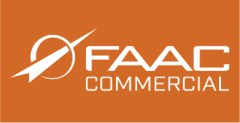Transit Training for Mixed Fleets
Published

Public transit bus fleets have always been a mixed bag: one of these vehicles, two of those, a few dozen others, plus paratransit vehicles, cutaway buses, minibuses, and more. The proliferation of EVs and the transition to ZEB (zero-emission buses) add even more swatches to an already crazy quilt of vehicle types and manufacturers.
As transit training expert Nigel Lindsey-King explains: “Everybody’s jumping on the EV bandwagon now with loads of new vehicles and their corresponding charging strategies. But nobody really has all the answers yet, especially when it comes to training. To a certain extent, bus manufacturers are doing things just slightly differently from each other—and, obviously, very differently from how they did things in the past.”
To an Operator, a ZEB from Manufacturer A might drive very differently than a ZEB from Manufacturer B—and those vehicle dynamics might change quite a bit with respect to their location, the weather, and driving conditions, and ultimately the battery’s state of charge. “The lack of industry-wide standards and best practices has become part of the problem with converting to electric vehicles,” Lindsey-King adds. “APTA and some of the more successful agencies, as well as other transit-related organizations, are definitely trying to help, but a lot of transit properties are still scrambling with their conversion to EVs and feeling like they’re making it up as they go along.”
A New Role for Simulation Training in Mass Transit
Lindsey-King has more than 40 years of experience in public transit, including three-plus decades spent with the Toronto Transit Commission, training Operators, supervising instructors, and developing and administering training programs for a wide range of transit vehicles. He’s long been a staunch advocate of simulation training in general.
“As an instructor,” Lindsey-King explains, “there’s no way I would ever let you get into a dangerous situation behind the wheel of an actual bus, even on a closed course. On the other hand, on a simulator, I can let you make a fatal mistake and then see the consequences of your actions. I can replay the exercise so that you see what you could have done differently. And finally, we can re-drive the scenario so that you can practice making the correct decisions to avoid the incident. That has a tremendous impact, from a training standpoint.”
He’s finding that simulators are also uniquely powerful tools for agencies with mixed fleets. That’s especially the case during this transition period to entirely new vehicle systems, when those fleets often include diesel, hybrid, and ZEB vehicles.
“Typically, most transit properties have more than one bus or vehicle manufacturer brand. For example, at one time, the principal vehicle at my agency was built by Orion, but—and I’m dating myself now—we were also still operating GM and New Flyer buses. We had both 40-foot buses, articulated buses, and paratransit vehicles. Our FAAC simulator had a profile for each one of those vehicles, so that what the trainee saw and felt as they drove the simulated vehicle matched how the actual bus behaved out on the street. FAAC has customers all over North America who have many different vehicle types. So, their simulators arrive with quite a library of vehicle dynamics packages you can load and use.”
FAAC Offers Ultimate Training Efficiency
FAAC specializes in custom simulators that precisely match specific vehicles, including dash layout, OEM gauges, and other authentic components, and has invested time in building relationships with ZEB OEMs to ensure that these simulators can accurately capture the vehicle dynamics and unique aspects of the full range of ZEBs.
Due to their experience developing modular military driving simulation platforms, FAAC can take immersion further than many companies specializing in transit simulation and training. For example, FAAC offers simulation cabs with swappable panels and dashboards so that a single simulator can match your entire fleet. FAAC fabricated such a simulator for the San Francisco Municipal Transportation Agency, headquartered in San Francisco, CA. SFMTA has more than 2,200 Operators working on over 900 pieces of equipment, ranging from articulated trolleybuses to small cut-away paratransit vehicles. Their single FAAC simulator can replicate the operating experience for any of these at any time, right down to the look and feel of every control and dashboard element.
If you have questions or are ready to discuss your mixed-fleet training options, please feel free to contact FAAC today.
NOW QUALIFIED FOR THE NEW 2025 LOW NO GRANTS – MORE INFO HERE

